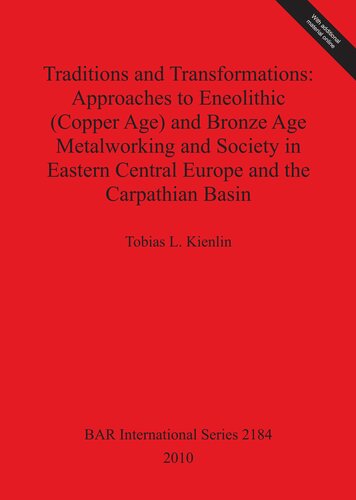

Most ebook files are in PDF format, so you can easily read them using various software such as Foxit Reader or directly on the Google Chrome browser.
Some ebook files are released by publishers in other formats such as .awz, .mobi, .epub, .fb2, etc. You may need to install specific software to read these formats on mobile/PC, such as Calibre.
Please read the tutorial at this link: https://ebookbell.com/faq
We offer FREE conversion to the popular formats you request; however, this may take some time. Therefore, right after payment, please email us, and we will try to provide the service as quickly as possible.
For some exceptional file formats or broken links (if any), please refrain from opening any disputes. Instead, email us first, and we will try to assist within a maximum of 6 hours.
EbookBell Team

5.0
108 reviewsThis study was conceived of some years ago as a sequel to the metallographic examination of Early Bronze Age axes from the north alpine region of central Europe. The original impetus was to provide a long-term perspective on the development of methods of casting and forging by extending the data base to Eneolithic/Copper Age material. In addition, by a shift east to the Carpathian Basin an attempt was made to allow for the existence of different traditions of early metalworking and compare regional trajectories into the metal ages. The approach may be termed cognitive since metallographic data, that is the examination of a metal object's microstructure, is used to reconstruct chaînes opératoires in the production of early metal objects and to compare the knowledge Eneolithic/Copper Age and Bronze Age metalworkers had gained of the different types of copper and copper-based alloys they were working. In the first instance therefore this work represents is an archaeometallurgical study in the early phases of metallurgy in parts of central and south-eastern Europe. Metallographic data from a large series of Eneolithic/Copper Age shaft-hole axes and flat axes is first published here in detail. The findings from this examination are discussed and both groups of implements are compared in terms of variation in their production parameters. This variation is related to both the technological change that came about during the Eneolithic/Copper Age and to a shift in emphasis placed on the production of shaft-hole implements and more mundane flat axes respectively. The conclusions drawn relate to genuinely archaeological questions. At least, the author hopes that they are of wider archaeological relevance and they are framed in such terms as to arise the interest of an archaeological audience beyond the sub-discipline of archaeometallurgy. There is also new data on Bronze Age material contained in this study, but most discussions related to that period draw on previously published data as well and try to integrate both data sets into a more comprehensive picture than was previously available.